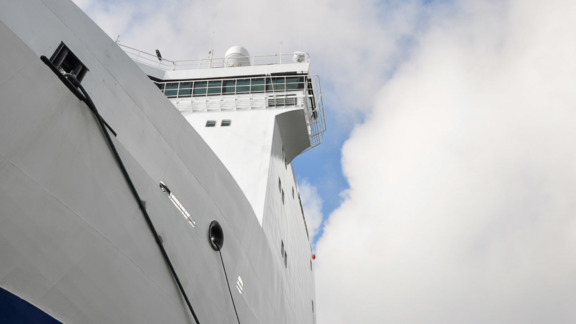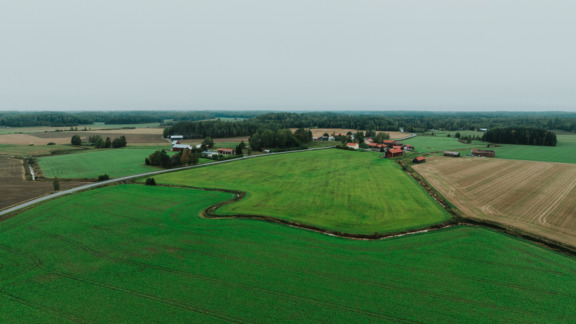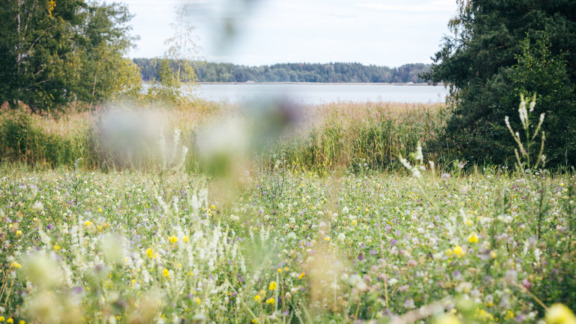BLOG: Diving underwater to protect marine biodiversity
The loss of nature’s biodiversity is a problem in both terrestrial and aquatic ecosystems. Species and habitats are lost in an accelerated pace on land and at sea, and our Baltic Sea is no exception. The collaborative Baltic Sea Action for Biodiversity project, initiated by BSAG, seeks to utilize existing, comprehensive data on valuable underwater habitats to facilitate practical work for marine protection.
The habitants of seas and oceans can be protected by establishing marine protected areas (MPAs). The challenges facing MPAs differ somewhat from the protected areas on dry land. Eutrophication and the rise in temperature and decreased salinity, brought on by climate change, affect the ecosystems regardless of their protected status. However, MPAs can help to ensure species’ wellbeing by limiting additional human-induced pressures.
Biodiversity hotspots in Finnish marine waters have been inventoried in the Finnish Inventory Programme for the Underwater Marine Environment (VELMU). The uniquely comprehensive VELMU data allows us to determine those underwater areas that would benefit the most from protection. The data also shows that most of the areas with the highest species richness fall outside the current MPA network. This is understandable, as data concerning underwater biodiversity has previously been lacking. MPAs have often been established based on the species and habitats above water. These aspects of biodiversity are also important but to ensure underwater biodiversity we must shift our attention below the surface.
It is important to keep in mind that biodiversity doesn’t only refer to the number of different species. Each species lives in a way that is specific to them, and their way of living affects the ecosystem. Species have different interactions with each other and the abiotic environment that surrounds them. This complex web of interactions is extremely difficult to grasp. This so called functional diversity needs to be included in our perception of biodiversity, and it cannot be addressed solely bu counting species. MPAs that are sufficiently large in size and cover many different habitats will likely help to support functional biodiversity.
Establising a successful MPA requires sufficient data on the species and habitats in the area, as well as identifying the pressures that they face. The ecological requirements of different species, and their different life stages needs to be well understood. The restrictions to human activity in the area need to be adequate, and different stakeholders must commit to reaching the protection goals. The area must be large enough, and ideally it would also be connected to other nearby MPAs. After the MPA has been established, it should also be further monitored to make sure that the protection goals are reached.
This list of demands is extensive, which is why MPAs quite often fail to reach their targets. Too small or scattered MPAs do not offer sufficient shelter to species. MPAs established with insufficient data can lead to the protection of relatively low value areas, while areas in need of protection are left out. The restrictions to human activities in the area can be inadequate if too big compromises with different stakeholders need to be made.
Involving stakeholders in the planning process is essential to the success of an MPA. Establishing MPAs by dictating from above usually leads to resistance and stakeholders’ unwillingness to respect the necessary restrictions to human activities. It is important that the part-owners of waterbodies get to participate in the discussion concerning their property already in the planning stages. On the other hand MPAs often benefit the owners as well, since they not only provide the owners with a healthy marine environment, but also prevent unwanted large-scale future operations in the area.
In spite of the challenges, MPAs are necessary to safeguard underwater marine biodiversity. In Finland, many issues related to knowledge gaps can be solved with the help of the VELMU data. The collaborative Baltic Sea Action for Biodiversity project, initiated by BSAG and with start-up funding provided by the Bank of Åland’s Baltic Sea Project, aims to figure out the complexities of establishing privately owned MPAs, as VELMU data has shown that most of the biodiversity hotspots are located on privately owned waters. Encouraging private owners to protect their waters and making the process of creating an MPA easier is in the heart of the Baltic Sea Action for Biodiversity project.
However, even the most well-planned and managed protected areas won’t help if the surrounding ecosystem is degrading. Ultimately, to protect biodiversity in the Baltic Sea we must work for the well-being of the entire sea.
Anna Klemelä
Communications coordinator, Baltic Sea Action Group



